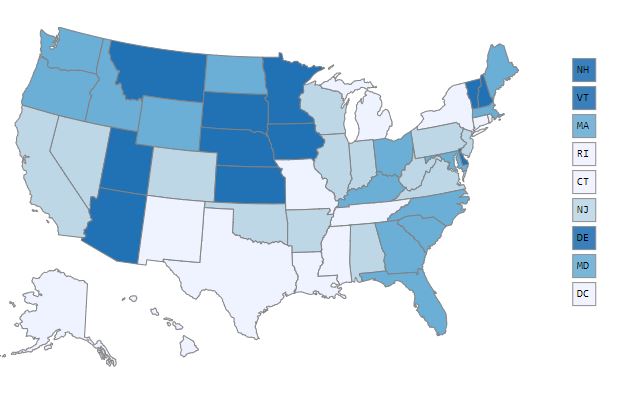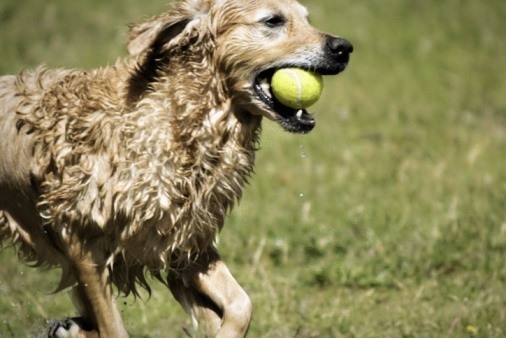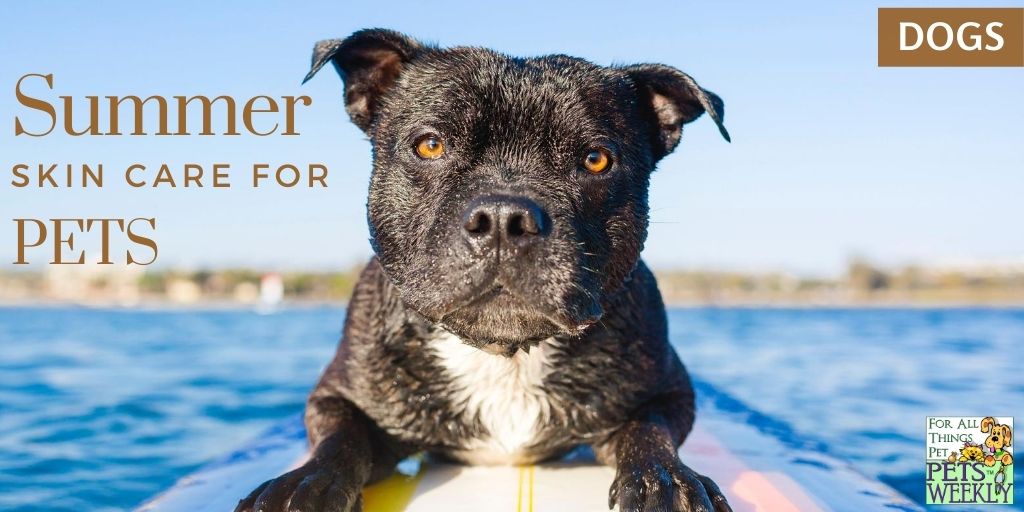Summer is a subject we take very seriously because in Arizona, it’s always summer. But, many people don’t know the sun is even more harmful in other areas of the world.
The sun’s rays are particularly harmful to pets living in higher elevations, like the Northwest and Northeast sections of the United States.

Cancer is the second leading cause of death in the United States, exceeded only by heart disease. One of every four deaths in the United States is due to cancer.
No matter where you live, understand that our pets are subject to a host of maladies. But one of the most common, and least talked about, is skin cancer.
Cancer accounts for nearly half of the deaths of pets over 10 years of age, so this is an important topic!
Mast cell skin cancer is the most common skin cancer in pets and it can show up anywhere on the body. Dogs get skin cancer at roughly the same rate as humans, while cats experience fewer types of cancers.

Melanoma
The National Canine Cancer Foundation states that, “Melanoma occurs commonly in dogs with pigmented (dark) skin. Melanomas arise from pigment producing cells called melanocytes, which are responsible for “coloring the skin.”
Dogs that are at an increased risk to develop melanoma (suggesting that this disease may have a hereditary component) include:
- Gordon Setters
- Standard and Miniature Schnauzers
- Doberman Pinschers
- Scottish terriers
Melanomas can occur in areas of haired skin, where they usually form small, dark (brown to black) lumps, but can also appear as large, flat, wrinkled masses. Melanoma of the haired skin in dogs is usually a benign tumor, although it can still cause severe discomfort.
In contrast, malignant melanoma, which develops in the mouth or in the distal limbs (usually the toenail beds), is an incurable disease.
But, don’t worry. We have some ways you can help protect your pet from the harmful rays of the sun…

Use Sunblock
Many dogs, believe it or not, need to have sunscreen applied to their more sensitive areas. This is especially true if they spend a lot of time lounging in the sun. Their sensitive, and hairless, bellies can be exposed to dangerous sun rays.
Sunscreens developed for use on humans can be toxic to pets – so never try to place sunblock on your pet unless it’s specifically designed for pets.
Avoid any product with Octyl Salicylate, Homosalate, or Ethylhexyl Salicylate (these are commonly found in many sunscreens).
If your dog is prone to sunburn or has sensitive skin, you can prevent sunburn by applying to the more sensitive regions, including the belly and tops of noses. This helps reduce exposure to harmful UVA and UVB sun rays.
Rather, it’s best to stay with sunscreen specifically developed for pets. The first (and only) that we can truly recommend is Epi-Pet Sun Protector.
At the time of this article,
Human sunscreens are not formulated nor are they prepared to be compatible with the skin of pets. Epi-Pet Sun Protector Sunscreen is safe if licked once it is applied to your dog (but should not be used on cats).
Many companies use chemicals made for humans to give their product an SPF rating. Zinc, Titanium Dioxide, Benzophenone, and Oxybenzone may be safe for humans are not safe for use on pets. Avoid carcinogens that lead to zinc toxicosis, impaired endocrine function, immune system failures, or allergies.
The following are two that we haven’t personally tried, but have heard they also yield good results:
- Emmy’s Best Dog Sun Skin Protector Spray: This non-toxic formula contains shea butter and coconut oil to help nourish your pet’s coat, while their proprietary formula is designed to protect from the sun. Their ingredients list is simple and effective, as well as paraben-free: Purified Water, Glycerin (Vegetable Derived), Octinoxate, Polysorbate-20, Nonionic Surfactant, MCT Oil, Opacifier, Jojoba Oil, Neem Extract, Flax Protein, Lanolin, Coconut Oil, Shea Butter, Preservative.
Brush Frequently
Dogs and cats with longer coats, or double coats, should never be shaved. Shaving a double-coated dog can actually make them hotter during the summer months, as their coats offer insulated protection from both heat and cold.
Instead of shaving your pet, brush your dog and cat daily. This will help them avoid mats, cool off faster, and avoid hot spots (as well as other skin conditions).
If your pets are prone to mats or tangles, try sprinkling the area with corn starch to help you more easily dislodge them. Use a de-shedding tool to help remove the thick undercoat and lighten your pet’s load without damaging skin or fur.
Be sure to take your pets in for regular grooming if it’s not something you can keep up with at home. This is especially important during summer.
Eye Protection
If your pet spends a lot of time on the water in a boat or kayaking with you, it may be time to invest in some eye protection. This is also true for dogs who spend time in the snow during winter!
Doggles Originalz
Shade is Critical
This seems like an obvious statement, but to many pet parents, it’s not. Your dog and cat should always access to shade – even if they choose not to always use it.
Not only does it protect your pet from a host of skin problems, it helps your dog stay cool in summer. Sun stroke and overheating can cause severe damage to pets, often resulting in death.
One of our favorite way to quickly create shade wherever we are is with the QuikShade Beds for Pets.
These covered beds keep pets off the ground, are easily stored, carried and set up no matter where you are (it’s a great way to handle the beach because it keeps them off the sand) and helps them stay cooler by allowing air to circulate beneath them.
Use Natural Shampoos
As you well know, we are rabid fans of DERMagic’s Organic Shampoo Bar. Their skin bar is one of the gentlest ways you can bathe your pet. While you really should try to avoid giving your dogs and cats frequent baths, doing so will help eliminate dandruff and other skin conditions.
No matter which shampoo or grooming sprays you choose, make sure you avoid anything that contains parabens, phthalates or sulfates. Choose shampoos and conditioners that are paraben-free and do not contain any lauryl/laureth sulfates.
Our favorites include Earthbath Puppy Wipes and Spritz, Gerrard Larriett, and Epi-Pet skin treatments.
Have a fun summer and be careful while you’re Boating with Pets!

